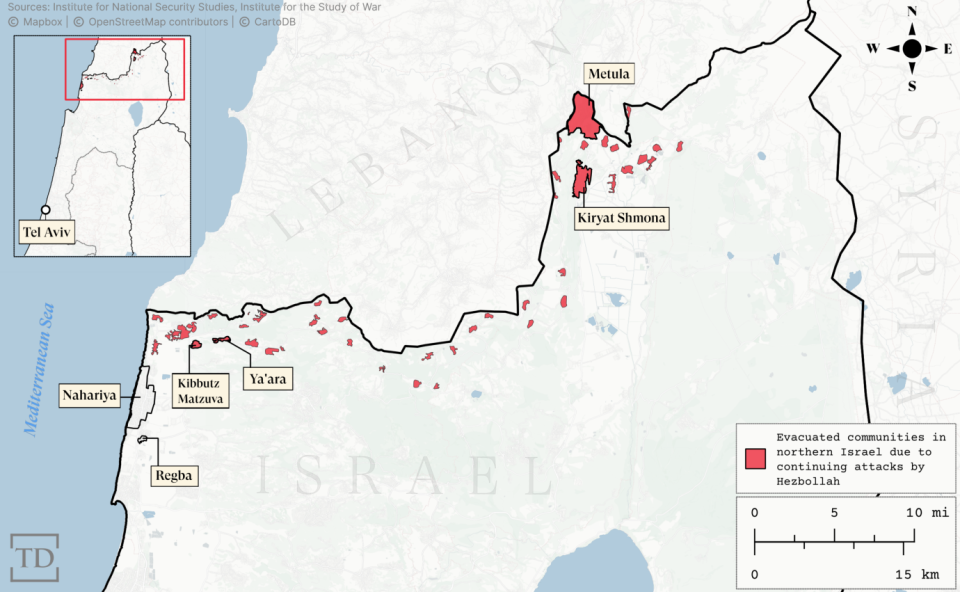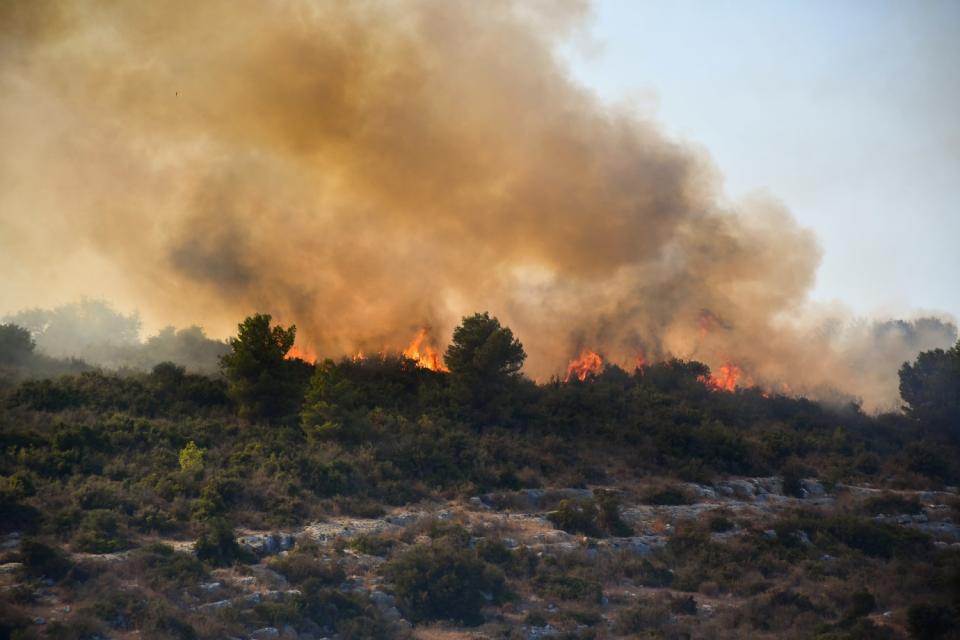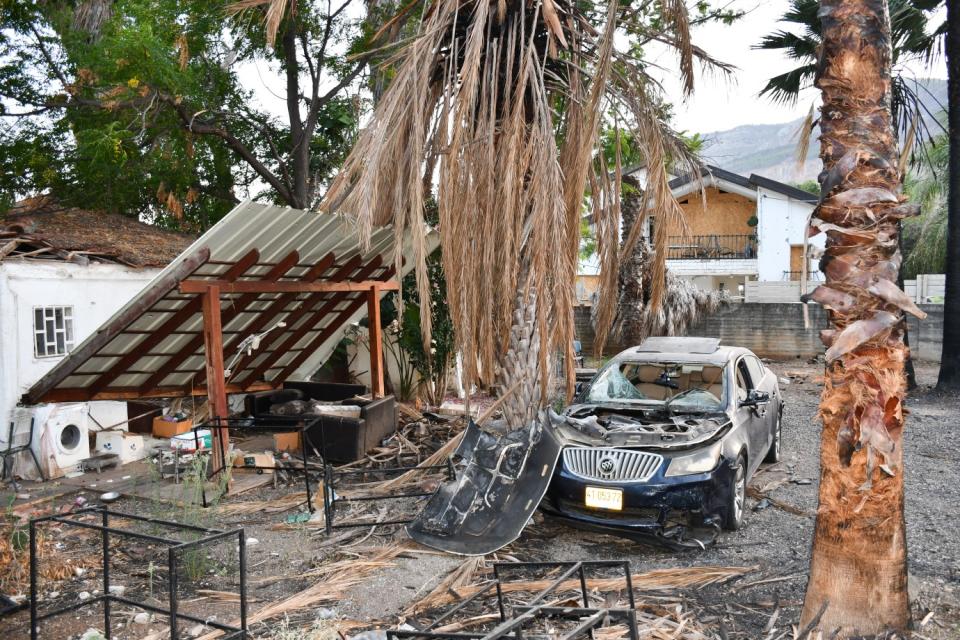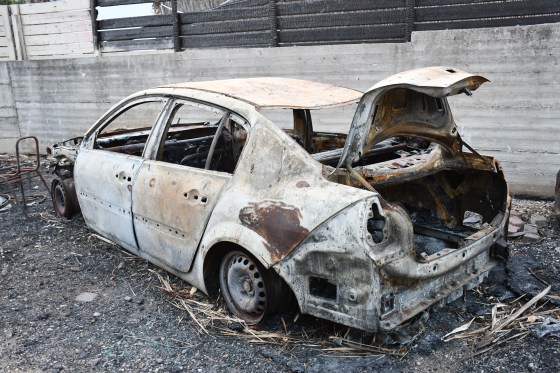
REGBA, Israel—For Ishai Efroni, director of security and emergency services for the Mateh Asher Regional Council, protecting his community from Hezbollah attacks is both a professional and personal endeavor. At the northwestern region’s makeshift command center, Efroni took calls from emergency services last week as reports came in of a Hezbollah rocket attack near his hometown of Kibbutz Matzuva.
With such bombardments happening almost daily, Efroni doesn’t expect residents of evacuated communities in his region to be able to return home anytime soon. “I can’t tell my people to come back. It’s not safe. They don’t have shelters,” he said Thursday. “It’s not normal life.”
As we spoke, rockets that fell near Matzuva sparked a fire in an open area that continued to spread through the dry scrub for hours afterward. In the border region of northern Israel, even coordinating civilian services like firefighting can pose an unacceptable risk to municipal workers, who must navigate both the fire and the threat of repeated rocket attacks by Hezbollah, the Iran-backed militia group whose attacks have ransacked large swaths of land near the Lebanese border since Oct. 8.
And the evacuated zone, which includes communities within about 2 miles of the border, isn’t the only part of northern Israel under threat. While Hezbollah is keeping some 60,000 Israelis from their homes with continued bombardment, it’s also firing on populated areas south of the abandoned towns and villages.


An analysis by the Alma Research and Education Center, a think tank focused on the security situation in northern Israel, found that the Iranian-backed group is increasingly finding targets outside the evacuated zone, in populated areas as deep as 20 miles into northern Israel. While such escalations have previously been consistent with Israeli strikes against Hezbollah commanders, Alma President Sarit Zehavi told The shipmentHezbollah is now looking for any pretext to expand its attack radius. (The Israeli air force has killed hundreds of Hezbollah fighters and dozens of commanders in targeted strikes since the war began, including its army chief Fuad Shukr in Beirut in July.)
Just last week there was a Hezbollah drone hit an apartment building in Nahariya, a coastal city of more than 60,000 people about 6 miles from the border with Lebanon. Last month, a motorist was driving on a highway in Nahariya died after He was hit by shrapnel from a surface-to-air missile that failed to stop an approaching drone attack.


Unlike fortified southern communities like Sderot, many of the evacuated and non-evacuated communities in the north lack adequate shelters, including those in the Mateh Asher region, where Efroni has poured every unallocated shekel into building protected spaces. According to the director of emergency services, the evacuated area of his municipality alone has some 500 homes without shelters. And for civilians, installing the safe rooms themselves is a costly endeavor: around $40,000 per home, depending on the terrain.
Twenty miles to the northeast, in Kiryat Shmona, the same problem is playing out on a larger scale. Thousands of homes in the town that once had a population of 24,000 remain without shelter, making it difficult for evacuated residents to contemplate a future there. Even local schools lack adequate protection, said Ariel Frish, a school principal who now serves as the town’s deputy security officer. Asked why the government hasn’t done more to prepare the large border community for the current fighting, he said, “We like to get addicted to silence,” adding that most residents thought Hezbollah, which suffered huge losses in its last war with Israel in 2006, had been deterred by Oct. 7.
Since then, Frish said, buildings in the city have taken at least 760 direct hits from Hezbollah. One such attack occurred late last month, leaving only a skeletal stone structure where a two-story house once stood after incoming rockets set fire to the building. “Firefighters are not armies, so they won’t come if it’s risky,” Frish said. “If they’re afraid there could be another rocket, they would say, ‘Better to burn the house down than to kill a man.'”


The community, like dozens of others along the northern border with Lebanon, now resembles a ghost town after nearly a year of war. About 2,000 essential workers and military personnel remain in Kiryat Shmona, but their presence is barely felt in the town’s empty streets. Meanwhile, displaced residents of northern Israel are scattered across hotels and rented apartments across the country, with no indication of when they might return.
For many, the prolonged evacuation of the north amounts to a recognition by Israeli leaders that the state cannot protect its own communities. January Survey A survey by Tel-Hai Academic College found that only 60 percent of evacuees were confident they would return home after the war. That percentage is likely to shrink as northerners become convinced their government cannot restore security.
“The possibility of a settlement in the north is over. Hezbollah continues to ally itself with Hamas,” said Israeli Defense Minister Yoav Gallant told his American counterpart, Lloyd Austin, on Monday, citing Hezbollah’s pledge to keep fighting until Jerusalem reaches a ceasefire agreement with Hamas. “The direction is clear.”
As Hezbollah’s attacks continue and intensify, and there is no sign of the terror group coming to the table to reach a diplomatic solution to the fighting, Israel may now face an impossible choice between abandoning the north or launching a costly all-out war, leaving many residents of border communities without a home to return to. Until a decision is made, Hezbollah can view Israel’s indecision as a victory in itself.
“For Hezbollah, psychological warfare is the best warfare. Terror is not about winning a war, it’s about scaring the population,” Frish said from a local kindergarten, which still shows signs of damage from being hit by a rocket early in the war. “As far as I can see, Hezbollah is the big winner so far.”







